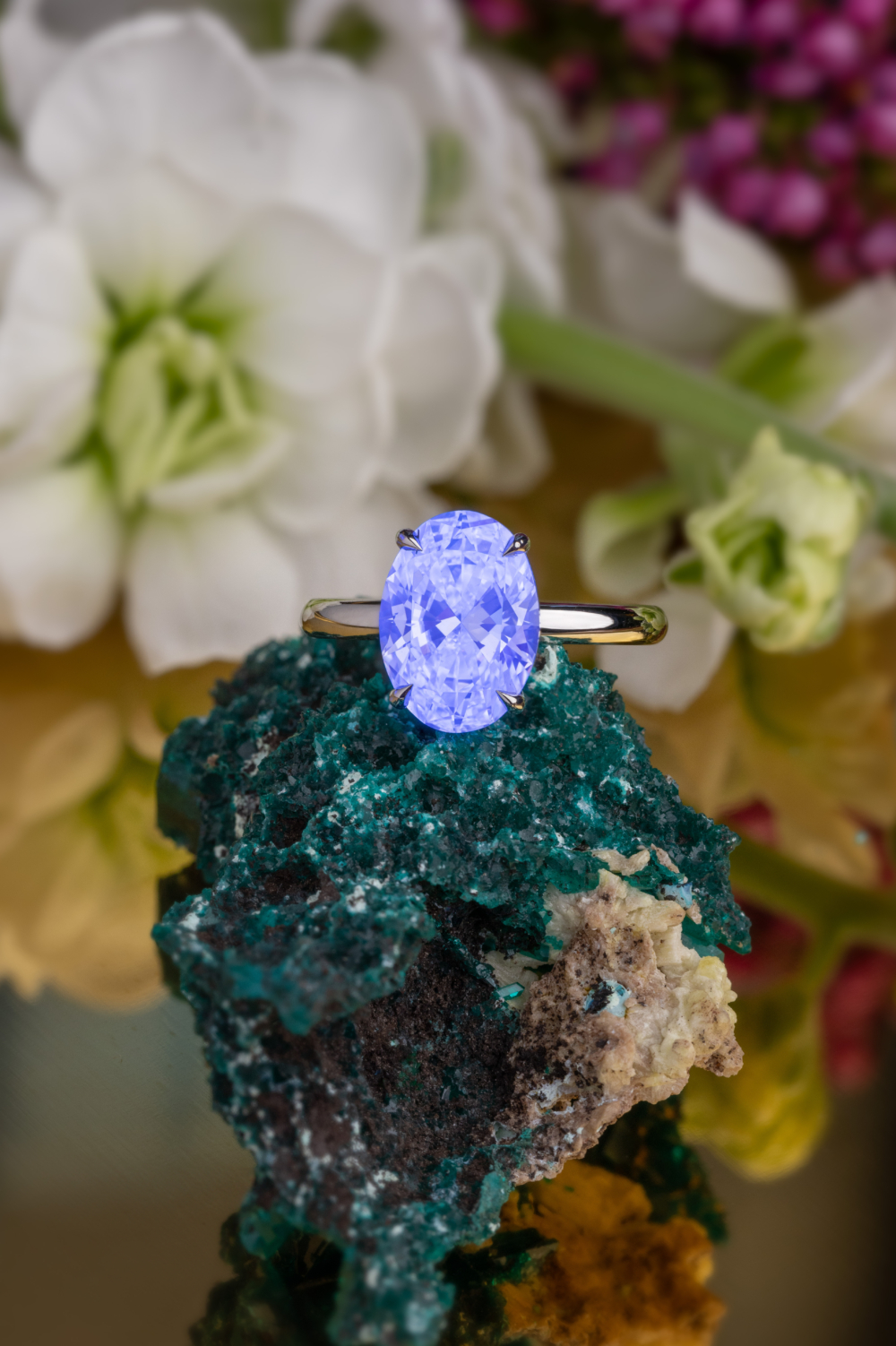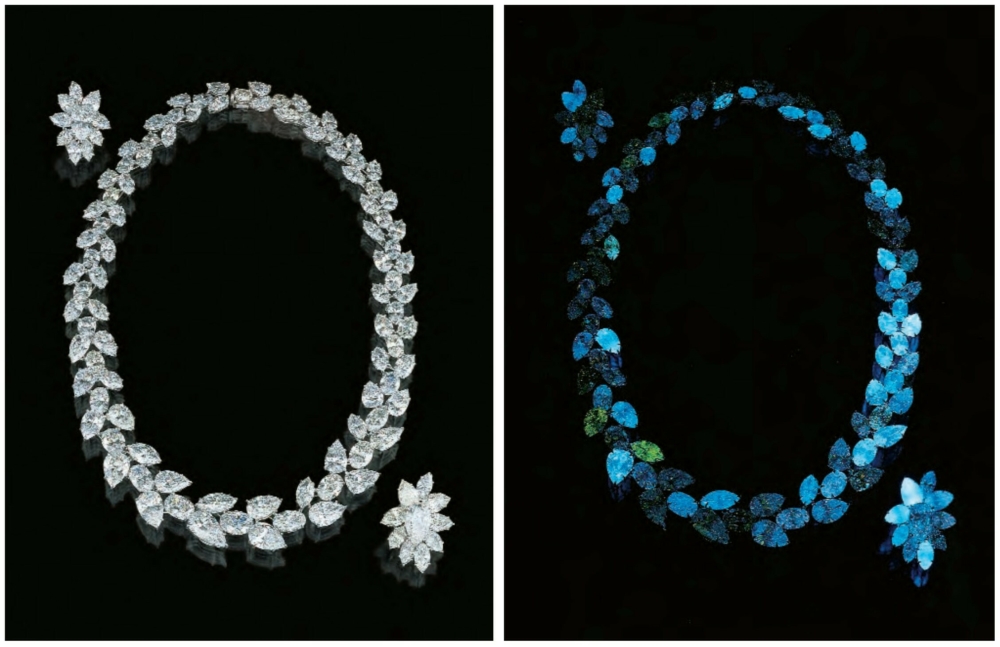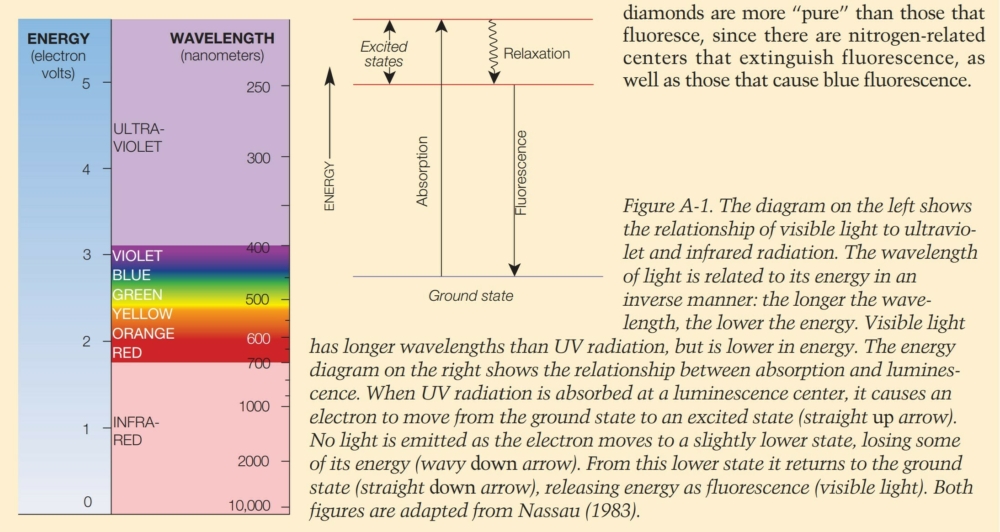October 15, 2023
Diamond fluorescence: Nature’s means of protecting its precious creations…
For far too long the remarkable phenomenon of fluorescence in natural diamonds has been villainised. A victim of the commercial world and its high-powered marketing campaigns this miraculous phenomenon has perhaps been unfairly penalised.
Yet for scientific experts, gemstone connoisseurs and collectors alike this is a topic of pure fascination. With a deep understanding of the physics, a superior knowledge brings heightened opportunity and intrigue, making it a subject of critical importance to even the most seasoned of buyers.
Further this natural phenomenon may just be nature’s secret way of differentiating its most precious creations from the readily available lab grown variety.
A natural defence in the rise of lab grown and synthetic diamonds...can lab grown diamonds fluoresce?
The natural world has a remarkable ability to continually inspire and create. Forming things in ways well beyond the capability of us as humans.
As of today, whilst humans have developed the capability to create diamonds in a laboratory, only a minute proportion of these stones display any form of fluorescence. Further, the strong blue luminance associated with natural stones is near impossible to achieve without further treatment (i.e. irradiation).
With the increasing prevalence & availability of lab grown diamonds fluorescence is perhaps nature’s means of distinguishing its cherished creations, with mankind currently unable to mimic mother nature's creative powers.

An ultraviolet light is shone on this 3.0ct solitaire diamond engagement ring to highlight the stones fluorescent characteristics and properties
The importance of understanding and education...
What is diamond fluorescence?
Diamond fluorescence is the emission of visible light (in varying colours) from a diamond when exposed to ultraviolet (UV) light. It is a complex phenomenon driven principally by the presence of trace elements in the stone's formation. The result is a unique and visually striking luminescence (or in simple terms a coloured glow) when the stone is viewed under UV light.
From where we sit, this is rather incredible to see.
What causes fluorescence in a diamond?
1. Trace Elements:
The principal cause of diamond fluorescence is the presence of trace elements within the diamond lattice. Notably, nitrogen is a common element linked to blue fluorescence (the most typical colour of luminescence). Nitrogen atoms dispersed throughout the crystal structure absorb UV light and re-emit it as blue fluorescence. In some rare cases hydrogen can also contribute to blue fluorescence.
For this reason, fluorescence is often noted in some of the world’s rarest stones, such as coloured diamonds, in many of which the colours stem from the presence of trace elements (such as Nitrogen in Yellow Diamonds or Uranium in green diamonds).
2. Structural instabilities
Subtle irregularities or inconsistencies within the diamond lattice can lead to, or alter, fluorescence levels. These occurrences create localised variations in the crystal structure, causing the diamond to respond differently to UV light. This can result in an uneven fluorescence pattern within the diamond.
Is fluorescence in a diamond bad?
Put simply, no, a fluorescent diamond is not "bad" (in fact, we think it is pretty amazing), it is just a natural phenomenon. In some instances fluourescence can actually improve the appearance of a diamond, particularly in lower colour grades. A diamonds' ability to fluoresce is just one of those cool things that nature does sometimes. Fluorescence does not damage a diamond, nor will it change over time.
How are levels of fluorescence measured and categorised?
It is important to note that diamonds (and gemstones) can display different levels and colours of fluorescence. Gemmological laboratories such as the Gemmological Institute of America (GIA) asses and grade diamond fluorescence at different levels and typically categorise them as having “None”, “Faint”, “Medium”, “Strong” or “Very Strong” fluorescence. It is often the case that the colour of any fluorescence will be noted to i.e “Strong – Blue”.

An extract from the GIA 1997 report: A Contribution to Understanding the Effect of Blue Fluorescence on the Appearance of Diamonds. The image above shows a creation by designer Harry Winston.
Breaking down the historical stigma of diamond fluorescence
As passionate collectors, connoisseurs and lovers of the natural world it is our view that stones that display fluorescent characteristics should perhaps be considered more precious, remarkable and valuable.
The driving force behind the historical stigma is that in a rare number of instances, stones with fluorescent qualities have been identified as appearing slightly milky, hazy or cloudy when viewed in direct sunlight (a source of UV light). Consequently, this message has somewhat deterred many. A message reiterated and reinforced over the years to the point where many would entirely disregard a diamond with fluorescence other than "none".
However, such an arbitrary stance is likely only to be adopted by those that are perhaps less informed. A study by the GIA in 1997 highlighted that in a sample of over 20,000 diamonds assessed, 62% contained notable fluorescence (“Medium” – to “Very Strong”) and of these, 97% fluoresced in the colour blue. Fluorescence in other colours such as white, yellow or orange made up the remaining 3%, so of the total sample size the likelihood of such colours being displayed is less then 1%.
The study goes on to comment that diamonds with fluorescence that appeared milky or cloudy in UV light were in fact rarer than stones that fluoresce yellow…
Further the report is quoted as stating in no uncertain terms:
“These results challenge the notion that strongly fluorescent diamonds typically have a hazy appearance.” GIA 1997

An extract from the GIA report highlighting the causal factors in the luminance of fluorescence.
What should be considered when assessing an individual diamond that displays any level of fluorescence?
Whilst it is possible for some strong fluorescing diamonds to appear cloudy in direct sunlight, it is also rare. Therefore, by disregarding all fluorescent stones one is at risk of unfairly dismissing many of nature's most beautiful creations.
It is advised to always assess any given stone in person, under a variety of lighting environments and alongside the advice of a gemmology expert. Ultimately, with any given stone what you see is what you get – it is just a case of knowing what to look for, in what conditions and at what level of magnification…
Do other gemstones such as sapphires fluoresce?
Fluorescence is not a characteristic limited to diamonds and it is also present in a number of gemstones including sapphires. Unlike diamonds, sapphires typically fluoresce in a wider variety of colour including blue, yellow, green and orange. Similarly to diamonds the causes of fluorescence in sapphires is linked to trace elements and the presence of transition metals.
In sapphires Chromium and Iron are they key trace elements responsible for causing fluorescence. Chromium imparts red fluorescence, while iron can produce blue and green fluorescence in certain sapphires. The specific hues and intensity of fluorescence depend on the concentration of these trace elements and their interaction with UV light.

A comparison that highlights the fluorescent characteristics of a 2.0ct Madagascan green sapphire under ultraviolet (UV) light. This particular specimen fluoresces red due to the presence of Chromium
The perception of fluorescence in gemstones
Unlike in diamonds, historically fluorescence in coloured gemstones (and coloured diamonds) has been widely accepted as part of the wonder of their creation and physical make up. Which raises the question as to why white diamonds should not be perceived and considered in a similar way?
For those acquiring a coloured gemstone it is unlikely that the stones level or type of fluorescence will be of any meaningful consideration as the impact on the stones appearance is typically negligible. This is of course different from a collectors stand point who may be looking to acquire a stone on the grounds that its fluorescent characteristics make it exceptionally rare and therefore more desirable.
An experts' verdict on the importance on diamond fluorescence
We are unequivocal in our view that nature's power of creation is truly unrivalled...
Putting aside any emotions or stances one may have in the "natural" vs "lab grown" diamond debate, the phenomenon of fluorescence provides a clear cut means of differentiating between the too.
So in the fullness of time (perhaps even now), might it just be the case that this little slice of nature's magic shifts its historical stigma and becomes a defining feature in the most desirable of natural diamonds...?

A 3.0ct natural oval diamond engagement ring sits proudly on the finger highlighting the stones remarkable qualities in natural and alternative lighting environments